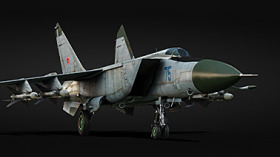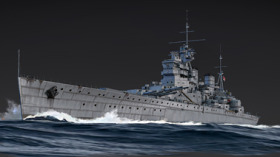
- For PC
- For MAC
- For Linux
- OS: Windows 10 (64 bit)
- Processor: Dual-Core 2.2 GHz
- Memory: 4GB
- Video Card: DirectX 11 level video card: AMD Radeon 77XX / NVIDIA GeForce GTX 660. The minimum supported resolution for the game is 720p.
- Network: Broadband Internet connection
- Hard Drive: 23.1 GB (Minimal client)
- OS: Windows 10/11 (64 bit)
- Processor: Intel Core i5 or Ryzen 5 3600 and better
- Memory: 16 GB and more
- Video Card: DirectX 11 level video card or higher and drivers: Nvidia GeForce 1060 and higher, Radeon RX 570 and higher
- Network: Broadband Internet connection
- Hard Drive: 75.9 GB (Full client)
- OS: Mac OS Big Sur 11.0 or newer
- Processor: Core i5, minimum 2.2GHz (Intel Xeon is not supported)
- Memory: 6 GB
- Video Card: Intel Iris Pro 5200 (Mac), or analog from AMD/Nvidia for Mac. Minimum supported resolution for the game is 720p with Metal support.
- Network: Broadband Internet connection
- Hard Drive: 22.1 GB (Minimal client)
- OS: Mac OS Big Sur 11.0 or newer
- Processor: Core i7 (Intel Xeon is not supported)
- Memory: 8 GB
- Video Card: Radeon Vega II or higher with Metal support.
- Network: Broadband Internet connection
- Hard Drive: 62.2 GB (Full client)
- OS: Most modern 64bit Linux distributions
- Processor: Dual-Core 2.4 GHz
- Memory: 4 GB
- Video Card: NVIDIA 660 with latest proprietary drivers (not older than 6 months) / similar AMD with latest proprietary drivers (not older than 6 months; the minimum supported resolution for the game is 720p) with Vulkan support.
- Network: Broadband Internet connection
- Hard Drive: 22.1 GB (Minimal client)
- OS: Ubuntu 20.04 64bit
- Processor: Intel Core i7
- Memory: 16 GB
- Video Card: NVIDIA 1060 with latest proprietary drivers (not older than 6 months) / similar AMD (Radeon RX 570) with latest proprietary drivers (not older than 6 months) with Vulkan support.
- Network: Broadband Internet connection
- Hard Drive: 62.2 GB (Full client)

 |
Dear players!
Today we begin a series of explorations into the diaries of Max Lachmann (Stockholm, Sweden). Max has worked on the audio for a range of projects, such as Battlefield, Need For Speed, Death Rally, Race, Driver: San Francisco and many others.
In these diaries, Max talks about his experiences whilst sound recording for War Thunder. We had to look all over the world for the authentic vehicles which were used for these recordings, and so, Max delves into his adventurous job and describes his experiences. Without further ado, here goes the first diary of Max Lachmann.
Getting an email from Pavel Stebakov, Lead Sound Designer at Gaijin, is always exciting, since you know it’s usually the start of an unusual and fun recording adventure. As it turns out though, it’s always possible that these adventures can prove to be more difficult than usually expected, which was exactly the case with the Avro Lancaster recording. I had suggested to Pavel that we should record a Lancaster bomber, and he agreed. However at the time, I didn’t know that only two airworthy Lancasters existed in the world…
 |
Pavel agreed right away and I began my search on the web, looking for aircraft and contact info. I also sent out emails to some of the great people that had helped me out throughout the years, like Laura at the OFMC in Duxford. Eventually, it stood clear to me that there were only two that were capable of flying; one in the UK, and one in the Canadian Warplane Heritage Museum, Canada. I made contact with both of these locations, and described what I was looking to do, asking them if they were willing to help out and at what cost. It turned out that the Lancaster located in the UK had already been stored away for winter maintenance, so my only hope was to ask the people in Canada to help out. We did get another kind offer from the UK, a Lancaster that could be run on the ground only, but since Pavel wanted fly-bys, Canada was our only option.
After an endless amount of emails, taking a lot of patience from Al Mickeloff at the Canadian Warplane Heritage Museum, who sorted every detail, from deciding on a date and finding a local rental place for the stands and cables (these are too heavy to bring along) to security explaining regulations in Canada about standing on the runway etc, we where ready to go! In November, Eilam Hoffman and I were set to fly over to Toronto to record, at that time, the only flying Lancaster in the world! However, as the trip drew closer, we heard rumours about the Canadian border control being the worst in the world, and this made us a bit nervous. Did we need any kind of VISA or work permit to perform a recording in Canada? After a few sleepless nights and some phone calls to embassies and so on, we finally ended up with a written letter from Gaijin, explaining the purpose of our trip, which we were to show at the border.
So, in November we flew over to Toronto, heavily packed with recorders and microphones. The first experience that confronted us as we exited our plane were three policemen, asking everyone what their purpose they had travelled to Canada for. We explained that we were sound recordists, there to record the Lancaster. The policemen got really excited, and one of them told us about his granddad who used to fly one of them. Soon after, they let us pass. It was the same at every passport control; we showed the letter and they were really excited about what we were doing. In fact, I have never met such friendly border control staff! They even recommended good places to eat dinner when in Toronto! Once through all the controls, we picked up our rental car and drove the two hours to our hotel in Hamilton, situated close to the airfield, where we were to meet up with the Lancaster crew the next day.
 |
 |
Early the next morning, we loaded everything into the car. The batteries had been charging all night and all the recorders were prepared. We took the short drive down to the museum, and there she was, the amazingly beautiful and HUGE Avro Lancaster with four Rolls-Royce Packards 224s! Now the hard work began. We talked through with the crew what we wanted to do, even though this, of course, had been explained in emails prior the trip as well. We needed two engine runs with the plane static on the ground, and one session with fly-bys and pass overs. We decided on doing the flying bit first. Since we wanted to record the interior of the plane while flying, we first rigged a Sound Devices 788 right behind the pilot. We then had a MKH8020 placed in the tail by the gunner's position, two RE-20’s further up in the body, a Neumann RSM191 by the pilot position and another MKH8020 by the bomber position. We also attached a couple of Zoom H4n’s; one in the back and one behind the pilot's seat. When we had finished with the interior rigging, we went out onto the runway and set up a number of rigs along the stretch. We had a Holophone head placed into a Zaxcom Fusion recorder, a couple of Fostex FR-2’s with Sanken CSS-5 shotgun mics following the plane, a pair of Schoeps CMC-6 into a Sound Devices 702, a pair of MKH60’s into a another SD702 etc. Once ready, we went back and switched on our devices inside the aircraft, and then back out onto the runway, where we started the recorders and waited… And what a sound! To be able to fly really low, they had to approach for landing, aborting every time. We got eight really nice fly-bys, before they took her down and taxied over to the location for the ground runs.

We quickly packed up our stuff and went back, just to get the rigs up again for the ground runs. We did two ground run recordings, and finally, recorded some taxiing. Despite some wind, it was a really fun, exciting and exhausting recording.
Once done for the day, we spent a couple of hours removing all the microphones (you have to be really careful when doing this so as not to ruin the paint job, since we use gaffer tape), rolling up the rental cables, folding and packing the rental stands and packing everything else up. Finally, back at the hotel, there was no rest until we had made backups of all our recordings on the memory cards, so that all material was stored on at least two different hard drives. When that is done, there are a couple of hours of work needed to set up a Pro Tools session containing all the recorded tracks lined up in sync and named properly, which makes it easier for Pavel to open up the session and immediately be able to work with it. Before we flew back, we also met up with the camera guy that had been joining us for the day, and picked up a hard drive with all his material.
The War Thunder Team



